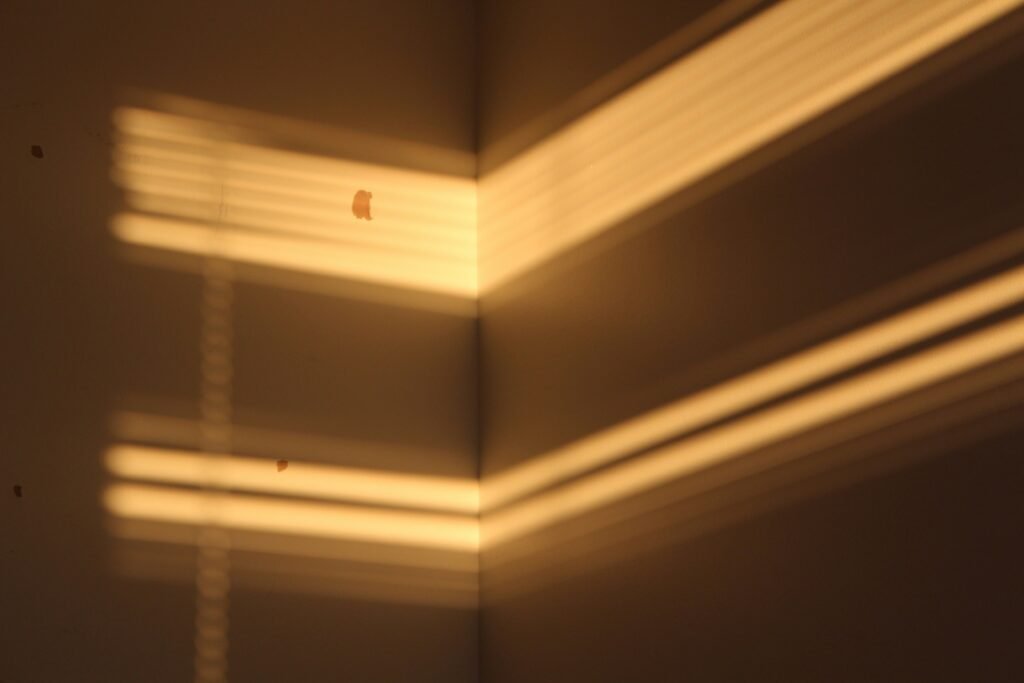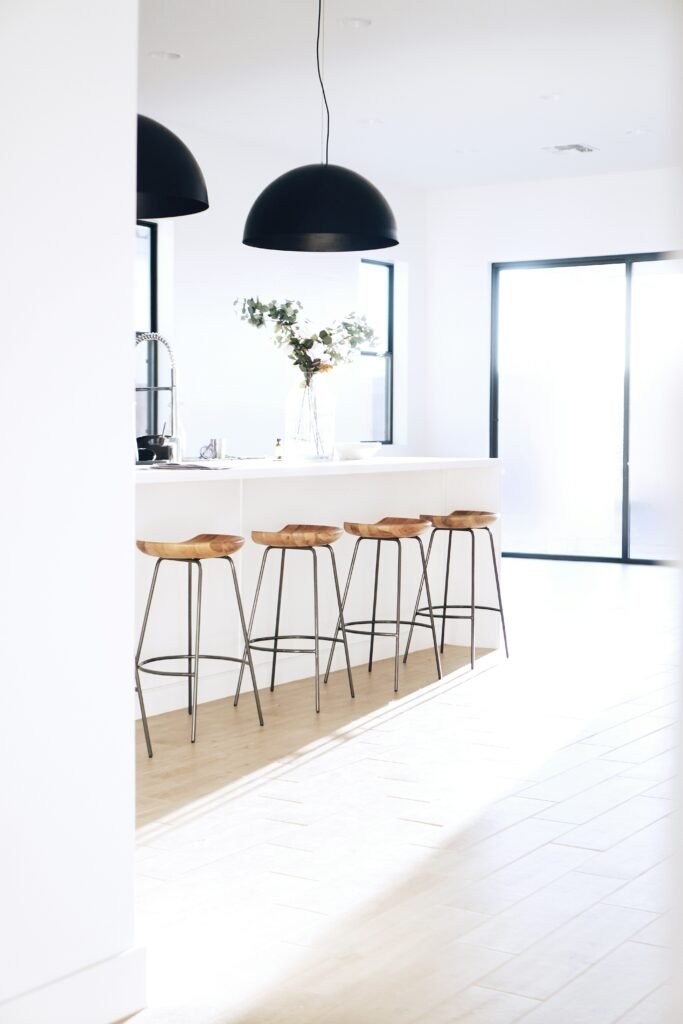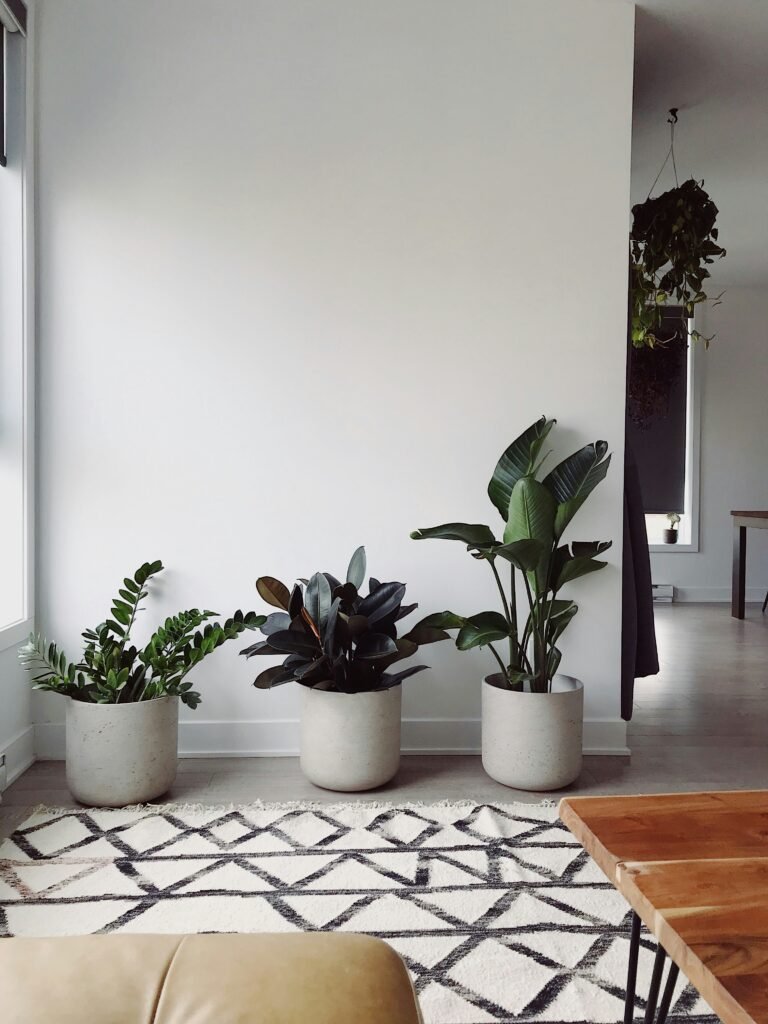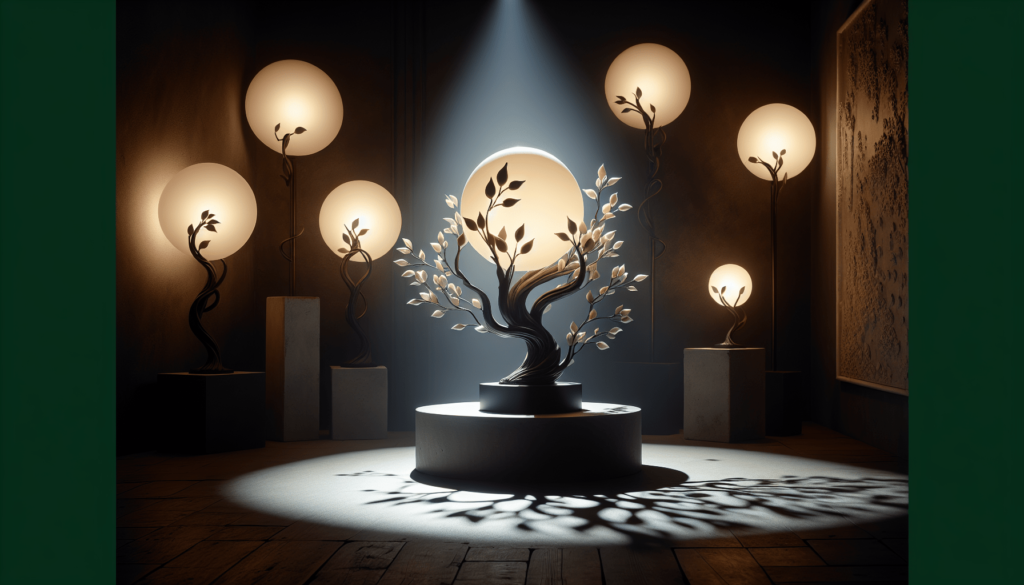Have you ever wondered how to create the perfect ambiance in your home? Well, look no further! This article will provide you with some valuable pointers on accent lighting. Whether you are looking to brighten up a cozy corner or highlight a special piece of artwork, these tips will help you transform any space into a warm and inviting haven. From choosing the right fixtures to properly positioning them, you’ll soon be on your way to achieving the ideal ambiance for any occasion. So, let’s get started and bring out the beauty of your living space with accent lighting!

Types of Accent Lighting
Wall Washers
Wall washers are a versatile type of accent lighting that can dramatically enhance the look and feel of any room. These fixtures are designed to evenly wash a wall with light, creating a soft and gentle glow. Wall washers are often used to highlight textured walls, artwork, or architectural features. They can also help to visually expand the space by providing indirect lighting.
Spotlights
Spotlights are a popular choice for accent lighting due to their focused and concentrated beam. These fixtures are perfect for highlighting specific objects or areas, such as artwork, sculptures, or bookshelves. Spotlights can add a touch of drama and create a focal point in a room. By directing the light precisely, you can draw attention to the desired elements and create a visually pleasing effect.
Puck Lights
Puck lights are small, circular fixtures that can be installed in various locations. These versatile lights are often used to illuminate under-cabinet areas in kitchens or to create a soft glow in display cases or bookshelves. Puck lights are discreet and can be easily hidden, making them perfect for creating a subtle ambiance. They are available in a range of colors and styles to suit any decor.
String Lights
String lights are a playful and charming option for accent lighting. They consist of a string or wire with small bulbs attached at regular intervals. String lights can be draped across a room, wrapped around objects, or hung from the ceiling to create a whimsical and enchanting atmosphere. They are especially popular for outdoor spaces, where they can add a touch of magic to gatherings or garden parties.
Choosing the Right Bulbs
Incandescent Bulbs
Incandescent bulbs have been a longstanding choice for accent lighting due to their warm and inviting glow. They emit a soft, yellow light that adds a cozy and romantic ambiance to any space. However, incandescent bulbs are not the most energy-efficient option and have a shorter lifespan compared to other types of bulbs. They also generate more heat, so caution must be exercised when using them.
Halogen Bulbs
Halogen bulbs are a popular choice for accent lighting due to their bright and focused beam. They emit a white light that closely resembles natural daylight, making them ideal for highlighting artwork or architectural features. Halogen bulbs are more energy-efficient than incandescent bulbs and have a longer lifespan. However, they can get quite hot and may require additional ventilation or cooling to prevent overheating.
LED Bulbs
LED bulbs have become increasingly popular for accent lighting due to their energy efficiency and longevity. They produce a bright and crisp light that can be easily adjusted in color and intensity. LED bulbs are available in various options, including warm white, cool white, and customizable RGB colors. They are also cool to the touch and do not emit harmful UV rays, making them a safe and eco-friendly choice.

Placement and Positioning
Highlighting Artwork
When using accent lighting to highlight artwork, it is essential to consider the placement and positioning of the fixtures. Aim for a three-point lighting setup, where two fixtures are placed at a 30-degree angle on each side of the artwork, and a third fixture provides additional illumination from above. This arrangement will create a balanced and visually appealing lighting effect, drawing attention to the details and colors of the artwork.
Illuminating Focal Points
Accent lighting can be used to create focal points in a room by illuminating specific areas or objects. For example, you can use spotlights to highlight a fireplace, a feature wall, or a display cabinet. By strategically directing the light towards these focal points, you can enhance their visual impact and make them stand out in the room. Experiment with different angles and intensities to achieve the desired effect.
Creating Drama with Shadows
Shadows can play a crucial role in accent lighting, as they can enhance the drama and depth of a space. By placing a light source at a low angle or using fixtures with adjustable beams, you can create intriguing shadow patterns on the walls or ceiling. This technique adds an element of mystery and visual interest, making the room feel more dynamic and engaging. Experiment with different positions and intensities to achieve the desired shadow effect.
Color Temperature and Lighting Design
Understanding Color Temperature
Color temperature refers to the perceived warmth or coolness of light. It is measured in Kelvin (K), with lower Kelvin values indicating warmer light and higher values indicating cooler light. Understanding color temperature is essential when designing the lighting scheme for a room. For accent lighting, a combination of warm and cool tones can create a visually pleasing and dynamic effect.
Determining Desired Ambiance
The color temperature of accent lighting can greatly influence the ambiance of a space. Warm tones, such as those with a color temperature of around 2700K, create a cozy and inviting atmosphere. Cooler tones, around 4000K or above, give a more energetic and modern feel. By selecting the right color temperature for each area, you can set the mood and create the desired ambiance.
Combining Warm and Cool Lighting
To achieve a balanced lighting design, consider combining warm and cool lighting throughout the room. Warm lighting can be used for creating a cozy and intimate ambiance in areas such as living rooms or bedrooms. Cool lighting, on the other hand, can be used in areas that require more focus and concentration, such as home offices or kitchens. By layering warm and cool lighting, you can create a harmonious and visually appealing space.

Dimmers and Control Options
Installing Dimmer Switches
Dimmers are an excellent addition to accent lighting setups as they allow you to adjust the brightness of the fixtures. Installing dimmer switches is relatively straightforward and can help create the desired ambiance in a room. Dimmers give you control over the intensity of the light, allowing you to create a soft and romantic glow or a brighter and more energetic atmosphere.
Using Smart Lighting Technology
Smart lighting technology offers advanced control options for accent lighting. With the use of smart bulbs and compatible apps or voice assistants, you can adjust the color, intensity, and even the scheduling of your accent lighting. This technology allows for seamless integration with other smart home devices and provides convenience and flexibility in managing your lighting environment.
Creating Scenes and Presets
With the combination of dimmers and smart lighting technology, you can create scenes and presets for different activities or moods. For example, you can set a “Movie Night” scene that dims the accent lighting and adjusts the color temperature to create a cinematic experience. Alternatively, you can set a “Relaxation” preset that bathes the room in warm and soothing light. The ability to customize and save these settings adds versatility and convenience to your accent lighting.
Layering Lighting Techniques
Task Lighting Combined with Accent Lighting
Layering different lighting techniques can greatly enhance the functionality and aesthetics of a space. Combining task lighting with accent lighting provides both focused illumination and a touch of ambiance. For example, in a kitchen, under-cabinet puck lights can provide task lighting for food preparation, while spotlights can highlight decorative elements. By layering these techniques, you can create a well-lit and visually appealing area.
Ambient Lighting as a Base Layer
Ambient lighting serves as the base layer of a lighting design and provides overall illumination for a room. It ensures that the space is adequately lit and offers a comfortable level of brightness. When layering with accent lighting, consider using ambient lighting to establish the general atmosphere and then use accent lighting to add depth, interest, and a touch of personality to the space.
Balancing Light Levels
When layering lighting techniques, it is crucial to balance the light levels to create a cohesive and visually pleasing effect. Avoid overpowering one layer with another, as it can create an imbalanced and uncomfortable environment. Consider the function of each layer and adjust the intensity and positioning of fixtures accordingly. By achieving a harmonious balance, you can create a well-lit and inviting space.

Utilizing Different Fixtures
Table Lamps
Table lamps are a versatile and functional option for accent lighting. They can be placed on side tables, desks, or nightstands to provide localized illumination. Table lamps come in various styles and designs, allowing you to find the perfect match for your decor. They can be used to create intimate reading corners, add a cozy glow to the bedroom, or provide task lighting in a home office.
Sconces
Sconces are wall-mounted fixtures that can add a touch of elegance and style to any space. They are available in various designs and can be used as both accent and ambient lighting. Sconces can be installed on either side of a mirror, a fireplace, or an artwork to create a symmetrical and visually pleasing effect. They can also be used to amplify the architectural features of a room.
Recessed Lights
Recessed lights, also known as can lights or downlights, are fixtures that are installed into the ceiling. They provide a clean and streamlined look while offering versatile lighting options. Recessed lights can be used for both accent and ambient lighting. They can be positioned to highlight specific areas or objects, or they can be evenly spaced to provide overall illumination. Recessed lights are popular choices for kitchens, bathrooms, and hallways.
Track Lighting
Track lighting consists of a track system that holds multiple light fixtures. This type of accent lighting offers flexibility in positioning and directing the light. Track lighting can be used to highlight artwork, create task lighting in a workspace, or provide general illumination in a large room. It allows for adjustable beams and can be easily repositioned to suit changing lighting needs.
Outdoor Accent Lighting
Highlighting Landscaping Features
Outdoor accent lighting can transform the look of your home’s exterior and enhance the beauty of your landscaping. By strategically placing fixtures, you can highlight trees, shrubs, or architectural features. Use spotlights to draw attention to focal points, such as a beautiful tree or a well-designed pathway. Wall washers can be used to create an even and gentle wash of light on walls or fences. By illuminating landscaping features, you can create a stunning visual impact and improve the overall curb appeal of your home.
Illuminating Paths and Walkways
Outdoor accent lighting is not only aesthetically pleasing but also serves as a safety feature. Illuminating paths and walkways can prevent accidents and guide guests to your home. Use path lights or stake lights to line the edges of paths, creating a well-defined and inviting entrance. For a more dramatic effect, consider using string lights or lanterns to create a whimsical and enchanting atmosphere along your walkways.
Enhancing Outdoor Entertainment Spaces
Outdoor entertainment spaces, such as patios or decks, can benefit greatly from well-placed accent lighting. Consider using string lights to create a cozy and inviting ambiance, perfect for gatherings or parties. Install sconces or wall-mounted fixtures near seating areas or dining spaces to provide localized illumination. By enhancing your outdoor entertainment spaces with accent lighting, you can extend the usability of these areas well into the evening.

Choosing Light Fixtures for Different Rooms
Accent Lighting Ideas for Living Rooms
Living rooms are versatile spaces that can benefit from a variety of accent lighting options. Consider using wall washers to highlight textured walls or artwork. Spotlights can be used to draw attention to bookshelves or decorative elements. Table lamps can provide localized illumination for reading corners or side tables. By combining different fixtures and techniques, you can create a warm and inviting atmosphere in your living room.
Creating a Relaxing Bedroom Ambiance
Accent lighting in the bedroom should focus on creating a relaxing and soothing ambiance. Consider using table lamps on nightstands to provide a soft and warm glow. Install wall sconces on either side of the bed to create a symmetrical and balanced lighting effect. Consider using string lights to add a touch of enchantment and charm. By selecting fixtures that emit warm and gentle light, you can create a cozy and tranquil bedroom oasis.
Task Lighting Solutions for Kitchens
Kitchens require functional and task-oriented lighting to ensure safety and efficiency. Combine accent lighting with task lighting by installing under-cabinet puck lights. These fixtures provide localized illumination for food preparation areas and countertops. Consider using track lighting to highlight a central island or a dining nook. Recessed lights can provide overall illumination for the room. By layering different lighting techniques, you can create a well-lit and functional kitchen space.
Maintenance and Safety Tips
Regularly Cleaning and Dusting Fixtures
To maintain the effectiveness and appearance of your accent lighting, it is important to regularly clean and dust the fixtures. Dust and dirt can accumulate on the surface of bulbs and light fixtures, reducing their brightness and potentially causing overheating. Use a soft, dry cloth or a gentle cleaning solution to wipe down the fixtures and remove any accumulated debris. Be sure to follow the manufacturer’s instructions for cleaning and maintenance.
Replacing Bulbs Properly
When replacing bulbs in accent lighting fixtures, it is important to do so carefully and safely. Ensure that the power to the fixture is turned off before attempting to remove or install a bulb. Use the correct size and type of bulb as recommended by the manufacturer. Avoid touching the bulb with bare hands, as this can leave oils on the surface and reduce its lifespan. If you are unsure about the proper procedure, consult a professional electrician.
Ensuring Electrical Safety
When installing or adjusting accent lighting fixtures, it is crucial to prioritize electrical safety. If you are not experienced with electrical work, it is advisable to hire a licensed electrician for installation or maintenance. Ensure that all fixtures are securely fastened and properly grounded. Avoid overloading circuits by keeping track of the wattage requirements of your lighting fixtures. Regularly inspect your electrical system for signs of wear or damage, and address any issues promptly.
In conclusion, accent lighting plays a crucial role in creating the perfect ambiance in any space. By understanding the different types of accent lighting, choosing the right bulbs, strategically placing and positioning fixtures, considering color temperature and lighting design, utilizing dimmers and control options, layering lighting techniques, selecting appropriate fixtures for different rooms, and following maintenance and safety tips, you can achieve a well-lit, visually appealing, and functional environment that suits your personal style and enhances your overall living experience. Whether it’s indoors or outdoors, accent lighting allows you to bring out the best features of your home while creating a warm and inviting atmosphere for yourself and your guests.



